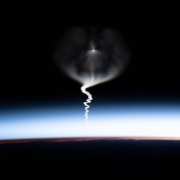Dave Trecker on Cleaning Out the Technology Files
 by Dave Trecker
by Dave Trecker
Once a year I clean out my technology files, which seem to multiply and create clutter like no others. The topics are
always interesting though; it’s fun to see what the experts see for the future. Here are a few visions from the 2020 files:
• Floating homes were touted as the ultimate answer to sea level rise. Not boats, but actual homes bobbing offshore
– some moored, others connected to floating docks. They rise and fall with the tide and all have great water views.
Downsides are sewage and garbage disposal. The floating homes aren’t futuristic; they’re here today. They cost
anywhere from $500,000 to $5 million. You can see them dotting the harbors in Miami, Seattle and Sausalito. None
yet in Naples Bay.
• Energy storing walls may be just around the corner. Scientists are fashioning bricks that have battery-like properties. Two simple chemical transformations combined with an electrolyte in the mortar give building blocks that function as supercapacitors. You can’t buy them at Home Depot yet, but in a few years you might be able to cut your electric bill by building walls that light up your house.
• Robotic firemen may soon become standard equipment in fire stations nationwide. The Los Angeles Fire Department is using one that can enter burning buildings and blast out 2,500 gallons of water a minute. A prototype made headlines last year when it lumbered into Notre Dame Cathedral, confronted an inferno abandoned by human
firefighters and directed water at a collapsing roof.
• Walking cars that can maneuver on any kind of terrain are being developed by Hyundai. My wife and I could have
used one a few years ago on a bone-jarring cross-country trip in Arizona. Those white knuckle days are gone forever.
Hyundai’s walking car can go off road, climb a 5-foot wall, step over boulders and bridge a 5-foot gap – all while
keeping its cabin level and passengers reasonably upright. When made autonomous, the vehicles will be able to deliver goods, including medical supplies, to inaccessible places everywhere.
• Food made from water and air might be the best of all coming attractions. That’s right. Combine the gaseous
ingredients in a fermenter driven by a naturally occurring bacterium and, presto, you have a biomass that contains
60-70% protein. It’s an environmentalist’s dream. You get rid of troublesome livestock and their manure and
flatulence that accounts for half of the country’s methane emissions, the worst of the greenhouse gases. Since you
don’t need cattle for meat, you also avoid fecal runoff that stokes toxic algae growth in our waterways. The fermentation approach requires a tenth of the water to deliver the same amount of protein, and you need no
fertilizer -driven feed to get there. Scientists in Finland, Belgium and the United States are pursuing this with the zeal of true believers. Here’s how it works. They take hydrogen gas from solar powered electrolysis of water and combine it with CO2 emissions and nitrogen from the air in a finely tuned fermenter powered by an oxidizing bacterium from the soil. The resulting biomass, when used in baking, is said to taste like carrot cake (maybe a bit hopeful).
Solar Foods of Finland is one of a half dozen startups fine-tuning the technology. It plans to begin pilot production in 2022. At this early stage the process is costly and inefficient, particularly the electrolysis step. But improvements are inevitable, and visionaries see nothing but upside. Could it happen? Food from water and air? It’s something to chew on.




Leave a Reply
Want to join the discussion?Feel free to contribute!